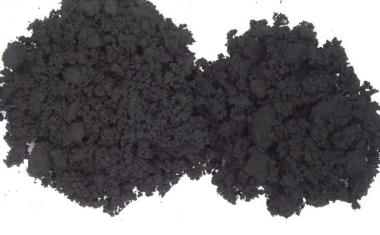Frackers in Frantic Search for Guar Bean Substitutes
Oil and gas companies are racing to find a new substitute for India's guar bean, a key ingredient used in hydraulic fracturing, the drilling technology that has revolutionized the energy industry by opening up vast new fields for production.
Hydraulic fracturing, or "fracking," first created a boom in natural gas drilling over the past decade that brought huge new supplies of the fuel to market, and that technology is now being used to unlock giant oil fields that were long considered too difficult to tap.
The extract from guar, a bean predominantly grown in India, produces a gel in fracking fluid that delivers "proppant" to hold open cracks in shale rock when it is fracked.
Within a day of each other in June, two Texas lawyers filed trademark applications for "AquaPerm" and "PermStim." What may at first sound like hair care products are actually substitutes for guar, a crucial ingredient in the fluid that is injected into fracked wells to extract oil and gas.
Emerging from the labs of Baker Hughes and Halliburton, respectively, the two products hit the market in the second quarter, in response to guar costs that had in some cases nearly doubled from the level of the previous three months because of a guar shortage.
Other companies that are exploring substitutes include Nabors Industries, Trican Well Service and Ashland.
Guar prices have eased somewhat, but any substitute is still a big prize for oil services companies as they try to stabilize costs.
A reliable and effective substitute will be in high demand as clients will make no allowances for mistakes in wells that can cost up to $8 million apiece.
In what analysts took as an early sign of success, AquaPerm's rollout was especially rapid. Baker Hughes said it replaced 5% of its guar with AquaPerm last quarter, and that this share could double by the end of this year.
The timing of the two trademark registrations in June was hardly a coincidence. Halliburton had issued a guar-related profit warning only days before its June 12 trademark filing for PermStim. AquaPerm had been registered on June 11, according to Baker's application with the U.S. Patent and Trademark Office.
Brian Uhlmer, a chemical engineer now head of energy research at Global Hunter Securities, believes the substitutes are up to the job. Yet any cost advantage they bring will hinge on how expensive guar is once they reach the market.
Dust in the wind
Uhlmer likened the situation to the recent shortage of sand used for proppant, which emerged when well completions were at their peak last year and in early 2012.
Carbo Ceramics, after enjoying a huge boost from demand for its fabricated ceramic proppants, has seen the value of its shares halve in the past six months as drillers retreated from basins filled with cheap natural gas.
Sand and guar together can account for three-quarters of the total frack bill, according to Basic Energy Services.
The guar shortage this year led fracking market leader Halliburton to do some very expensive stockpiling that it said it now regrets in light of the softening prices.
It is still unclear where guar prices will head. The Indian crop could be lower this year due to scant rains, but panic buying and bottlenecks have eased.
Demand for guar also comes from the food industry. It is found in a wide range of food products, from sauces to ice cream, in which alternative cellulose gum products are already used.
According to Canadian fracking specialist Trican Well Service, guar prices shot up 60% in Canada and 80% in the United States between the first and second quarters.
Spot prices for guar have since fallen by about half from their peaks in June, but remain well above a year ago.
Trican, which is ranked sixth by fracking capacity in North America, has high hopes for its own guar substitute, now being developed.
"We have seen the price of guar decline recently and expect this and the introduction of our guar alternative fluid to improve our operating margins during the second half of the third quarter and all of the fourth quarter," said Trican's CEO Dale Dusterhoft.
On a conference call in late July, Baker Hughes Chief Executive Martin Craighead explained how AquaPerm's launch had been accelerated.
But Baker offered no specifics, which EnergyPoint's Sheridan saw as a sign it may be easily replicated. "Secrets don't stay secret very long in the oil and gas industry," he said.
Halliburton has only just started deploying its PermStim around U.S. basins, in a total of about 40 wells last quarter.
A spokesman for Nabors, ranked fifth in fracking capacity, said via email that it was still working on its own in-house guar substitute. "We have field tested on several jobs but still have some development to do," he added.
















